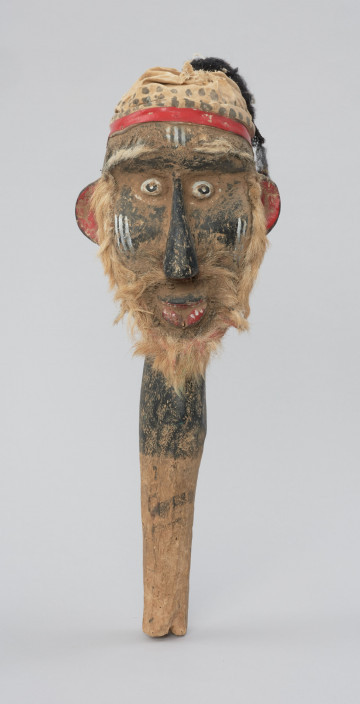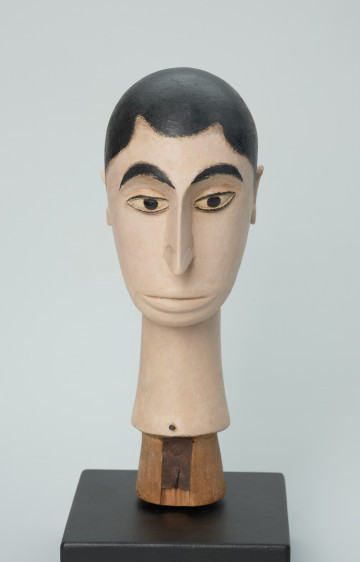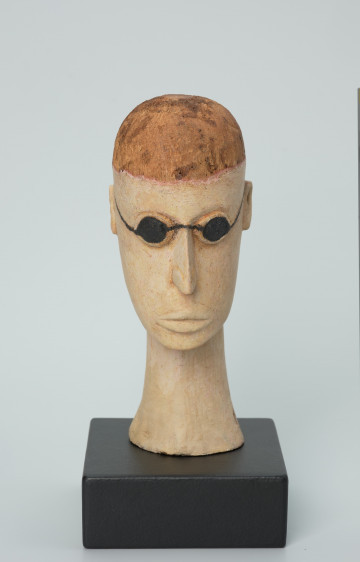
Theatre puppet - Bozo fisherman
między 1951 — 1969
National Museum in Szczecin
Part of the collection: Dolls from the sogo bò theater
The theatrical puppet (English: marionette, French: marionnette) is mounted on a long pole with a system of several short wooden elements connected by joints, folded harmoniously. The entire complicated construction is animated from below by a puppeteer hidden under fabrics. It is part of the Sogo bò theatrical tradition in the Ségou region, in the south-central part of the Republic of Mali, cultivated by Kamalen Ton, i.e. village youth associations. It depicts a rooster considered the perfect father of the family, which is the sacrificial bird for the Bozo people. The traditional puppet theatre from Mali occupies an important place in the history of African theatre. The first written account of an African puppet show comes from this country. It was handed down by the Arab traveller and geographer Ibn Battuta, who in 1355 stayed at the court of the ruler of the kingdom of Mali and witnessed a group of artists perform before the ruler. He described the puppeteers dressed as birds and danced with large red beaks attached to their heads in costumes made of feathers. Puppet shows, commonly called Sogo bò, meaning the animals moved ahead, are also referred to by other names, such as Kono donkili, Dobò or Cèko. Each of these names explains a part of their true nature. Kono donkili means a bird song and indicates that birds are important in his repertoire. According to contemporary artist Tiory Blé Diarra, birds are the souls of puppets. Cèko translates literally as a male thing and reminds us that only men can give life to a wooden doll. On the other hand, Dobò means a secret and refers to the mystery by which dead objects come to life during performances. The gift from Oleńka Darkowska-Nidzgorska and Denis Nodzgorski-Gordier.
Ewa Prądzyńska
Author / creator
Dimensions
cały obiekt: height: 68 cm, width: 9,5 cm
Object type
puppet
Creation time / dating
Creation / finding place
Identification number
Location / status

między 1951 — 1969
National Museum in Szczecin

między 1901 — 1950
National Museum in Szczecin

między 1901 — 1950
National Museum in Szczecin
DISCOVER this TOPIC
National Museum in Szczecin
DISCOVER this PATH
Educational path